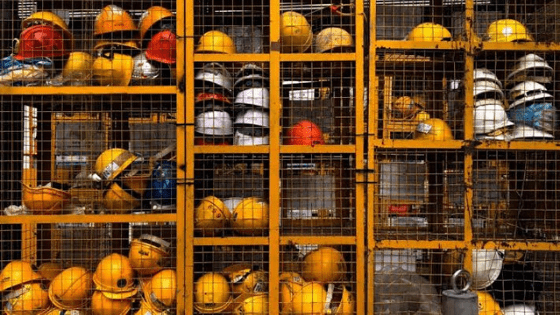Often in the workplace, be it emergency response, industrial, or any other field, the professionals are called upon to do everything with, obviously, safety in mind. The hazardous material handling and response industry is no exception to this ideology. From responding to incidents, to the weekly trainings, safety must be the #1 thing in the safety trainers’ minds when suiting up and heading out.
Here are a few essential tips for the safety trainers to go through their laborious day:
1. Heat stress
The summer months can wreak havoc on a worker inside of a chemical suit. From heat exhaustion to heat stroke, many heat related illnesses can sideline an otherwise healthy employee, when a well-planned break or cool down could have prevented it.
2. Worker Fatigue
In this industry of hazardous materials, a typical call could be a quick 1 hour trip to a local fuel spill, or on the opposite end of the spectrum, a well involved multi-day capture and recovery of an oil spill in a local waterway. A well rounded roster of manpower can relieve the stress of employee burnout and promote a sense of teamwork that is unparalleled by any other industry.
3. Job Related Injuries
When was the last time you were on scene and were able to mitigate the entire call by sitting in the cab of the truck? I don’t know about you, but I haven’t been to that call yet either. From crawling underneath tankers, to climbing scaffolding on the sides of a tank, a high impact job has the potential for slips, trips, sprains or scrapes. Proper work practices can go a long way when performing what we consider routine duties.
4. Mental Burnout
Has your crew been working a particularly stressful hitch? The stress of emotional runs or even just an overbearing overtime schedule can cause employees to become detached and burnt out on normal daily tasks, which can lead to serious careless errors and potential serious injuries to coworkers. Get creative in your off time! As a leader, make sure your crew gets the time to themselves to bond but also give them the chance to interact with each other in a non-workplace setting. The new found camaraderie may surprise you.
5. Complacency
Going to work and completing the same routine tasks day in and day out is a blessing in disguise that few may understand. If we can complete an entire day based on what we consider routine tasks, with no emergencies, or out of the ordinary circumstances, most of us would consider this a huge win. However on the flip side to this, workers often develop routines and rituals just as we are programmed to do. Checking equipment on this side first, left hand turn lift compartment etc…
Unfortunately this can tend to breed a sense of denial that each day or each task will be the same with each performance, and leave us vulnerable to sudden changes or situations that we need to pay close attention to. Try to change it up once in a while. If policies allow, have you tried to do your routine backwards? See everything from a new perspective before the boredom of the same old day comes to bite you.
6. Becoming An Advocate
Perhaps one of the most important elements of promoting a true safety culture where you work, is becoming a true advocate for others to follow. If we, ourselves are able to walk by an unsafe act without correcting or batting an eyelash, we have not only failed our employer, but we have failed our fellow employees. Empowerment for one to truly become their “Brother’s Keeper” starts at the top, and filters through the organization. We should expect a lot from our leaders, officers, and employees, however at the same time expect the same from ourselves.
7. Train like you perform
One of the most effective ways to provide a true safety culture is to train for one, just as you expect people to perform for one. We often let our guards down and allow a little slide here or there during training because hey, it’s not real world, do we REALLY want to get all of that equipment down right now? We’ve seen it before, right? This mentality leads to corners being cut not only in training, but it real world alike. Not to mention, if we don’t train like we play, will we truly know what to do when we are expected to perform?
One of the biggest examples that comes to mind, and is a true safety issue is accountability. When we pull up to a fire or other emergency, and do not follow proper accountability protocols – how will anyone know where to look for you when the situation becomes dire? A great method to remedy this and have crews in the “accountability” mindset is to issue tags for all training sessions. Each time a student or employee enters the class room they must check in with their “incident commander” just as they should on the fire-ground. Such a simple routine may not seem like it would be very effective, however the repetitive reinforcement of checking in will make true situations when it is needed flow better than much before.
Conclusion
A safe workplace takes a large effort from not only employees, but managers and officers alike. However the dividends that a safe workplace pays far outweighs the potential consequences that any one of us could possibly face if we let safety slip through our fingers.
Stay Safe, Train on!

